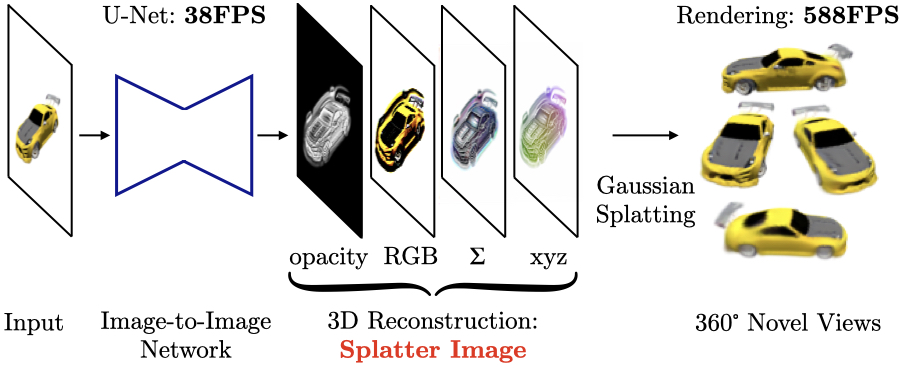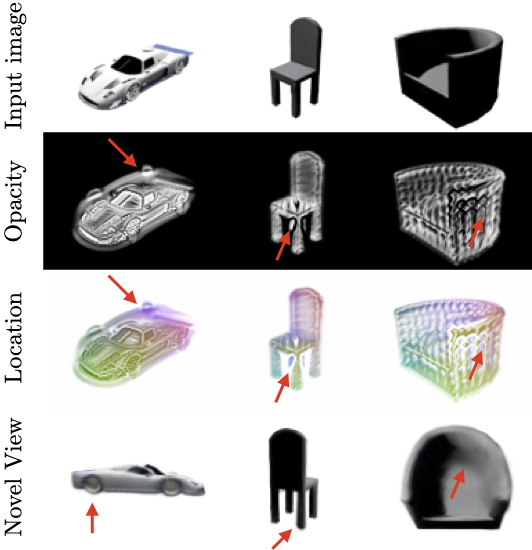Overview

The Splatter Image method uses Gaussian Splatting as the underlying 3D representation, taking advantage of its rendering quality and speed. It works by applying an image-to-image neural network to the input view and obtain, as output, another image that holds the parameters of one coloured 3D Gaussian per pixel. The resulting Gaussian mixture can be rendered very quickly into an arbitrary view of the object by using Gaussian Splatting. Remarkably, the 3D Gaussians in the resulting `Splatter Image' provide high-quality 360 degree reconstructions even when compared to much slower methods.
The key challenge in using 3D Gaussians for monocular reconstruction is to design a network that takes an image of an object as input and produces as output a corresponding Gaussian mixture that represent all sides of it. Our key insight is that, while a Gaussian mixture is a set, i.e., an unordered collection, it can still be stored in an ordered data structure. Splatter Image takes advantage of this fact by using a 2D image as container for the 3D Gaussians, so that each pixel contains in turn the parameters of one Gaussian, including its opacity, shape, and colour.
